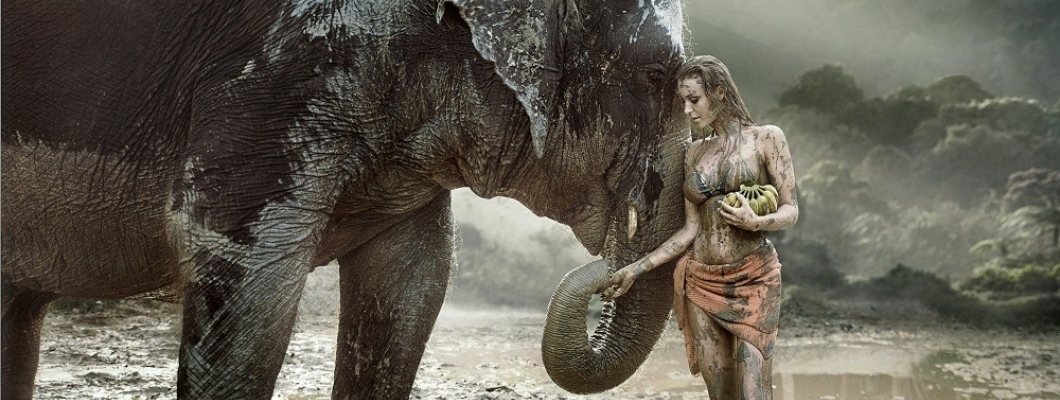Who is TOPSY the Elephant

Topsy the elephant was a tragic figure in the early 20th century, remembered for her unfortunate end and her involvement in a notorious moment in American history, intertwining animal cruelty, entertainment, and the so-called "War of the Currents."
Early Life and Circus Career
Topsy was born in Southeast Asia around 1875 and was brought to the United States as a young elephant. She spent the early part of her life performing in circuses, most notably with the Forepaugh Circus, where she was billed as the first elephant born in America, despite her Asian origins.
Incidents and Reputation
Topsy gained a reputation for being a "bad" elephant, which, in the context of the time, often meant she reacted violently to the abusive treatment common in circuses. Her reactions resulted in the deaths of several men during her career. One such incident involved a circus worker who tried to feed her a lit cigarette, after which she killed him. These events led to her being labeled as a dangerous animal.
Topsy was sold to Luna Park at Coney Island, New York, where her handlers continued to use cruel methods to control her. Luna Park was part of the entertainment empire of Frederick Thompson and Elmer Dundy, and Topsy was used for both labor
Topsy at Coney Island
Eventually, Topsy was sold to Luna Park at Coney Island, New York, where her handlers continued to use cruel methods to control her. Luna Park was part of the entertainment empire of Frederick Thompson and Elmer Dundy, and Topsy was used for both labor and entertainment.
The Execution
As Topsy's reputation grew, so did the public's fear and the desire of her owners to be rid of her. They initially planned to hang her, but the American Society for the Prevention of Cruelty to Animals intervened, arguing that hanging was a cruel and unusual punishment. Eventually, it was decided to kill her using a combination of poisoning, strangulation, and electrocution.
Thomas Edison's Involvement
Thomas Edison's involvement in Topsy's death is often linked to the "War of the Currents," a bitter battle between Edison's direct current (DC) electricity system and Nikola Tesla and George Westinghouse's alternating current (AC) system. Edison, in an attempt to prove the dangers of AC, had been publicly electrocuting animals. He filmed Topsy's electrocution as part of this campaign. The film "Electrocuting an Elephant" is a grim testament to this period.
The Execution and Aftermath
On January 4, 1903, Topsy was fed cyanide-laced carrots and electrocuted in front of a crowd at Luna Park. Her death was one of the first events ever captured on film. The event reflects the unfortunate treatment of animals in entertainment and the extreme measures taken in the corporate battles of the time.
Legacy
Topsy's story is a sad chapter in the history of animal entertainment and a poignant reminder of the importance of animal welfare and ethics. Her story is often revisited in discussions about animal rights and the history of electricity. While it's a grim tale, it serves as an important lesson in how animals should be treated with respect and compassion.
Did Edison really electrocute Topsy the Elephant?
The story of Topsy the elephant's death is often associated with Thomas Edison, but his direct involvement is a common misconception. Topsy was electrocuted, but this event was more a result of the era's harsh practices in animal handling and the ongoing "War of the Currents" rather than an action directly orchestrated by Edison himself.
Background of the "War of the Currents"
During the late 1880s and early 1890s, there was a fierce battle known as the "War of the Currents" between the electric power transmission systems of Thomas Edison's direct current (DC) and the alternating current (AC) system developed by Nikola Tesla and promoted by George Westinghouse. Edison, to demonstrate the dangers of AC, conducted a series of public demonstrations where animals were electrocuted using AC power.
Topsy's Death
Topsy was an elephant who had killed several people and was deemed a problem by her owners at Luna Park, Coney Island. After it was decided that she would be put to death, a plan was initially made to hang her, but it was opposed by the American Society for the Prevention of Cruelty to Animals (ASPCA). The decision was then made to use a combination of poisoning, strangulation, and electrocution.
The Filming
Edison's film company, Edison Manufacturing, captured Topsy's electrocution on film. This event occurred on January 4, 1903. The film "Electrocuting an Elephant" was released by Edison Studios. It's important to note that Edison Studios and Thomas Edison himself were not directly responsible for the execution but were present to film the event, which was then used in the broader context of the "War of the Currents."
Misconceptions
The direct association of Thomas Edison with Topsy's electrocution likely stems from the widespread publicity of Edison's earlier animal electrocutions and his film company's involvement in documenting Topsy's death. However, by the time of Topsy's execution, Edison had lost control of the electric company that bore his name and was not directly involved in the electrocution.
Conclusion
In summary, while Thomas Edison was not directly responsible for Topsy's death, his company did film the event, and this occurred in the broader historical context where Edison was involved in public demonstrations that sought to portray alternating current as dangerous. Topsy's tragic end is more accurately a reflection of the era's cruel practices in animal management and public spectacle, along with the fierce corporate rivalries of the time.













-200x120w.jpeg)

























































Leave a Comment